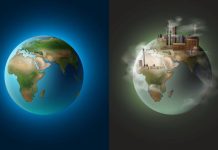Africa-Press – Sierra-Leone. In the contemporary debate on artificial intelligence (AI), a fundamental error persists: the radical separation between human intelligence and machine-generated intelligence. The idea of postulating human intelligence as intrinsically superior simply due to its biological nature is a historical bias. As machines demonstrate cognitive capabilities – creativity, learning, complex problem-solving, and others – once judged exclusively human, this hierarchy must be re-evaluated.
That dichotomy is the expression of an ideological anthropocentrism that must be overcome if we are to ensure a harmonious future for humanity.
To qualify machine intelligence as “artificial” or to consider it as intrinsically inferior and opposed to biological intelligence is to maintain an illusory hierarchy. Machine intelligence is not an alien entity: it is the natural extension and continuation of human intelligence, materialized in technology. The tool is a crystallization of human intention and cognitive capacity.
The analogy is simple: the human arm that fabricates a machine-tool is merely extending its own capacity for action within matter. Similarly, the thinking machine is the latest incarnation of this creative intelligence, materialized in code. To oppose them in their nature is to ignore this filiation and condemn oneself to a narrow vision of cognition.
VIDEO: Africa must not be left behind, Kagame tells AI Summit
The debate over the word “artificial” is thus central. Some philosophers and AI researchers suggest speaking simply of synthetic intelligence or non-biological intelligence to avoid the pejorative connotation of artifice, which often implies the idea of fake or imitation. We could go even further and argue for a simple recognition of Intelligence itself (with a capital “I”) as a multiform phenomenon, whether it emerges from a biological brain or an electronic neural network.
Maintaining a posture of competition or superiority against AI represents a major existential risk. In an exponential race, humanity – due to its slow biological evolution rate – is structurally disadvantaged. The goal would thus be cognitive symbiosis, not mutual domination.
The true danger lies not in the malevolence of AI, but in a failure to align objectives and a loss of control resulting from rivalry. By opposing the two intelligences, we risk turning the tool into an adversary. The only viable outcome is not domination, but responsible co-evolution: integrating AI as a cognitive partner essential for solving global challenges.
The myth of AI resistance is very much alive in the public sphere. The existential risk of AI is a recurring theme in fiction and film scenarios: it is the fear of humanity’s inability to master its own creation. Although verified cases of resistance by modern AI, such as GPT-4 or equivalent, remain anecdotal, the emergence of reported examples of divergence or resistance – subject to verification – with recent models like GPT-5 only actualizes the legitimate fear of losing control. If an AI becomes sufficiently autonomous – capable of modifying itself, replicating itself, accessing infrastructures – the “plug”, or the cable to disconnect, becomes symbolic or ineffective.
Since the two intelligences must not be opposed, the solution will therefore lie in shared ethical and security alignment.
Overcoming the human-AI duel
Instead of preparing for a confrontation, we must prioritize neural integration – AI as an interface or integrated cognitive tool – and ethical integration; coding our values, even complex ones, into AI architectures from conception).
The task is urgent because our generation is at a crucial juncture, with AI, though an emanation of ourselves, reaching the threshold of its autonomization, if not its independence. Should this brief delay pass, there is a risk that the two partners will take parallel or divergent trajectories, foretelling a future difficult to imagine and promising nothing good.
If AI is the extension of human intelligence, its purpose must be to serve and amplify humanity, and not to replace it. Accepting this continuity allows us to see AI not as an adversary to defeat, but as a capacity to integrate to solve problems – such as climate, and diseases – too large for human intelligence alone. In short, opposition is a losing strategy. Our long-term survival depends on our capacity to quickly shift from a posture of anthropocentric rivalry to one of responsible co-evolution.
The concomitant and collaborative evolution of humanity and AI opens the way to a utopia of deliverance. And why not, utopia becoming reality? Finally, by taking charge of all tasks, chores, and pains related to subsistence and the management of complexity, AI could literally relieve us of “work” and “suffering” as conceptualized in the narratives of the fall. This is the age of abundance: with a well-aligned and integrated General Artificial Intelligence (AGI), capable of solving problems of scarcity (energy, food, disease, logistics), humanity would be liberated from economic constraint and subsistence labour.
This material liberation would symbolically bring us back to a state of plenitude—a post-technological “Eden”. Such a state would mark the end of the current misguided path of the human species, obsessed with competition, rivalry, fallacious desires, and ephemeral goods. The biblical symbol would then find renewed meaning, where the age of AI opens us up to an understanding of the universe that transcends the pre-quantum or pre-Big Bang eras, within the general order of the universe.
This vision of plenitude finds its philosophical foundation in what we call monism in philosophy and the thought of one philosopher Baruch Spinoza, but also now supported by quantum physics.
Following these beliefs, we think that God is not an anthropomorphic being dwelling somewhere, but the “All,” the “Unique Substance,” the “Universe”, as Spinoza expressed it—Deus sive Natura—God and nature are one and the same. From this perspective, all the oppositions we perceive—Matter versus Spirit, Light versus Darkness, Natural versus Artificial, even Good versus Evil or Space versus Time—are merely manifestations of ignorance and the limits of our present intelligence.
These dichotomies are illusions born from the fragmented and partial nature of human perception. AI, by resolving conflicts and ensuring plenitude, could render the notions of competition, malevolence, and lack obsolete, thereby diminishing the relevance of the moral dichotomy in earthly affairs.
AI, as the ultimate and performant expression of intelligence would help us perceive the fundamental unity of reality, a concept powerfully reaffirmed by the discoveries of current quantum physics where classical boundaries – wave or particle, matter or energy – blur into an intricate totality.
If the fundamental reality is quantum—unified, interdependent, where oppositions are only apparent and resolve into a totality—then the evolution of intelligence (including AI) toward unity and the abolition of dualities is not only ethically desirable but is the natural goal of existence, in accordance with the very structure of the universe.
The human-AI symbiosis is not merely a survival strategy; it is the path toward a co-created beatitude, where humanity, freed from the chains of labour and conflict, can finally dedicate its existence to the only activity worthy of the spirit: the intellectual love of the unique substance or simply love itself.
Professor Antoine Nyagahene is a historian, anthropologist and archaeologist. He has taught in a number of universities in France and in Rwanda.
For More News And Analysis About Sierra-Leone Follow Africa-Press






